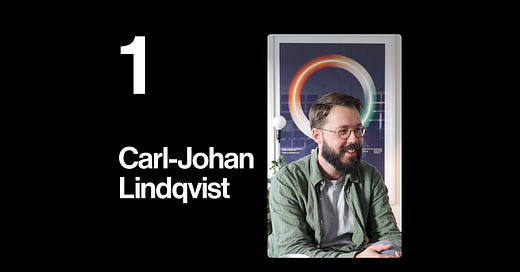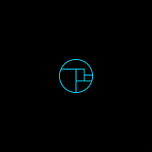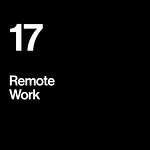Supported by:
Daylight Computer: the healthiest computer
Baked Graphics: amazing 3D video mockups
Framer: the best website builder for designers
ProtoPie: the best hi-fidelity interface prototyping tool
Carl-Johan Lindqvist is co-founder of the Gothenburg-based design studio Lundgren+Lindqvist.
Lundgren+Lindqvist’s practice covers visual identity design, art direction, graphics, print, packaging, signage, and web development. In all of these domains, their work sets the bar in terms of taste and sophistication.
L+L describe themselves as a studio with "purpose and precision," while Carl-Johan specializes as a developer who “utilizes code as a tool as natural to the design process as pen and paper.” Our conversation unpacks exactly what these ideas mean. We discuss their inspirations, process, philosophy, and tactics; their advice for younger generations; and the tensions between business, technology and craftsmanship that define creative professions today.






Products Mentioned
Highlights
On Tradition and Innovation
We believe very much in understanding the rules before you can break them... We are very type-driven, layout-oriented. We follow a lot of the best practices set in the 60s. But since we now know the rules, we can also break them.
On Responsive Design and Brand Identity
Responsive design is business card to billboard. How do I make sure that I can tell, when I hold up the business card next to the billboard, that this is the same company? We come down to typography and color, but also layout, and how we work with the type and colors. How you position elements can be very much part of how you create the connection between billboard and business card, or the mobile web and the cinema display. If you define your design system correctly, no matter the format, device, or size, you will instantly relate to the brand.
The Swiss Design (aka International Typographic Style) movement that originates from the 1950s is a strong influence on Lundgren+Lindqvist's style. The L+L aesthetic is obviously contemporary, but at the same time, exemplary of canonical theories on graphic design and typography.
Today, media tech moves at such speed, our work ends up displayed on devices and form factors we could never foresee. Brand identity today extends not only from business card to billboard and smartphone to TV screen; but also to mixed reality and audio-first experiences. The only constant (so far) is human perception.
L+L's approach evokes the Lindy effect: the future life expectancy of an idea is proportional to its current age. L+L seem to have found their way out of the predicaments of modern technology by applying theories and influences from the last century.
For more on Swiss Design, see articles from PRINT, 99Designs, and Smashing Magazine.
On Purpose and Precision
We say that we do design and development with purpose and precision. The "precision" is what you see in how the work is executed, the craft, the graphic design bit. "Purpose" is the strategic side of things: grasping our clients' needs in terms of visual communication, telling a story...
I come from designing posters, leaflets, physical pieces... There was a concrete end to my design process: when I send something to the printer's. Part of the process was to ship it, and I can't touch it after this time. Today, nothing is ever final. There can always be new ideas coming in, anytime in the process. Anything is possible – comes down to ones and zeros. It comes back to the "purpose" – if I know what I'm doing, I can say with my back straight: "Yeah, I could change what you ask for, but this does not align with the purpose we defined for this piece." Connecting ourselves and our clients around the purpose helps to ship things.
A framework that I find helpful for defining and explaining design work is to distinguish between strategy and tactics.
Strategy is brain-work. More often than not it’s abstract and invisible, and challenging to articulate (though the best strategy is always built on concrete evidence, and expressed visually).
Tactical work is easy to see – it’s the work we do with our hands, in the implementation of aesthetic choices.
My opinion is that the equal union of strategic and tactical work is part of what defines design, and sets the design discipline apart from other kinds creative work that prioritize one or the other. I've spoken about this on my personal YouTube channel before, and we'll dive into this in a future episode of Design Discipline.
L+L's commitment to "purpose and precision" is analogous. And Carl-Johan makes the case for how this thinking helps them in practice.
On Time and Making Fallow
Certain things must take time. Time is very important in our work. Sometimes, we need to work on things, and we need to let it be for a while. We need to think of it in the back of our heads, we need to come back to it in a few days or a week. That's when you can look at it from different angles...
In academic literature on design and designers, scholars like to invoke idea of "reflection in action" when they talk about the hands-on, tactical aspects of the work. This is a theory that gives us the language to talk about how we develop and use "tacit knowledge" – what experts know, but cannot explain.
The idea of reflection in action is crucial for philosophizing about design, but it's mostly about the instant feedback loop between thinking and doing that happens "in the moment." Considerably less philosophizing goes on around how "background thinking" – a larger and elusive feedback loop – figures in design work.
Prof. Barbara Oakley calls this the diffuse mode of thinking, vis-à-vis the focused mode. Though focused execution (aka "deep work") is where things get done, ironically, allowing time for diffuse thinking – leaving the mind fallow – is equally effective for creative work. This is where breakthroughs happen.
On Repeat Business and Long-term Relationships
At some of these clients, we know the brand better than anyone at the client, because everyone changed their jobs and positions, and we're still here. I find myself being the most senior in some meetings, in terms of knowing the brand. So we are an asset to the company – they actually ask us about how they have done things in the past.
We have clients that we've worked with for 10 years now. We work with them on projects with specific scopes, in specific timeframes, over those 10 years... The best work we do is when we can scope it to something tangible and deliverable, and then we can continue with a new piece.
Return customers are bread and butter of many small businesses. In public markets, companies with subscription-based business models are valued at a multiple of revenue vs. a multiple of profit for those chasing one-shot sales. A long-term relationships with your customer means you spend less on sales ops and invest more in product and innovation, all the while sleeping soundly at night as you're able to predict the next day's revenue and recruitment.
The single biggest action that dramatically increased my productivity, health, and inner peace in recent years was moving in with my girlfriend. Every weekend I used to put on my fancy pants and pray to the algorithms for right swipes. Being single is hard. "Look at me! Look at how hot I am today!"
When you're in a long-term relationship, instead you can ask: "Alright, we're in this for years. How do I make this better for both of us and our grandchildren?"
A recurring revenue model is straightforward for a product business. Design, on the other hand, is a service. It's a stretch to conceptualize how to do repeat business when your every project must be a unique and bespoke service. Carl-Johan lays out how it works.
Credit goes to Prof. Scott Galloway for building a bulletproof case for recurring revenue business models on his blog and podcast.
Special thanks to Mattias Nilsson, our director of photography for this episode.
Connect with Lundgren+Lindqvist
Website | Facebook | Twitter | Behance | GitHub | Instagram | Pinterest
















Share this post